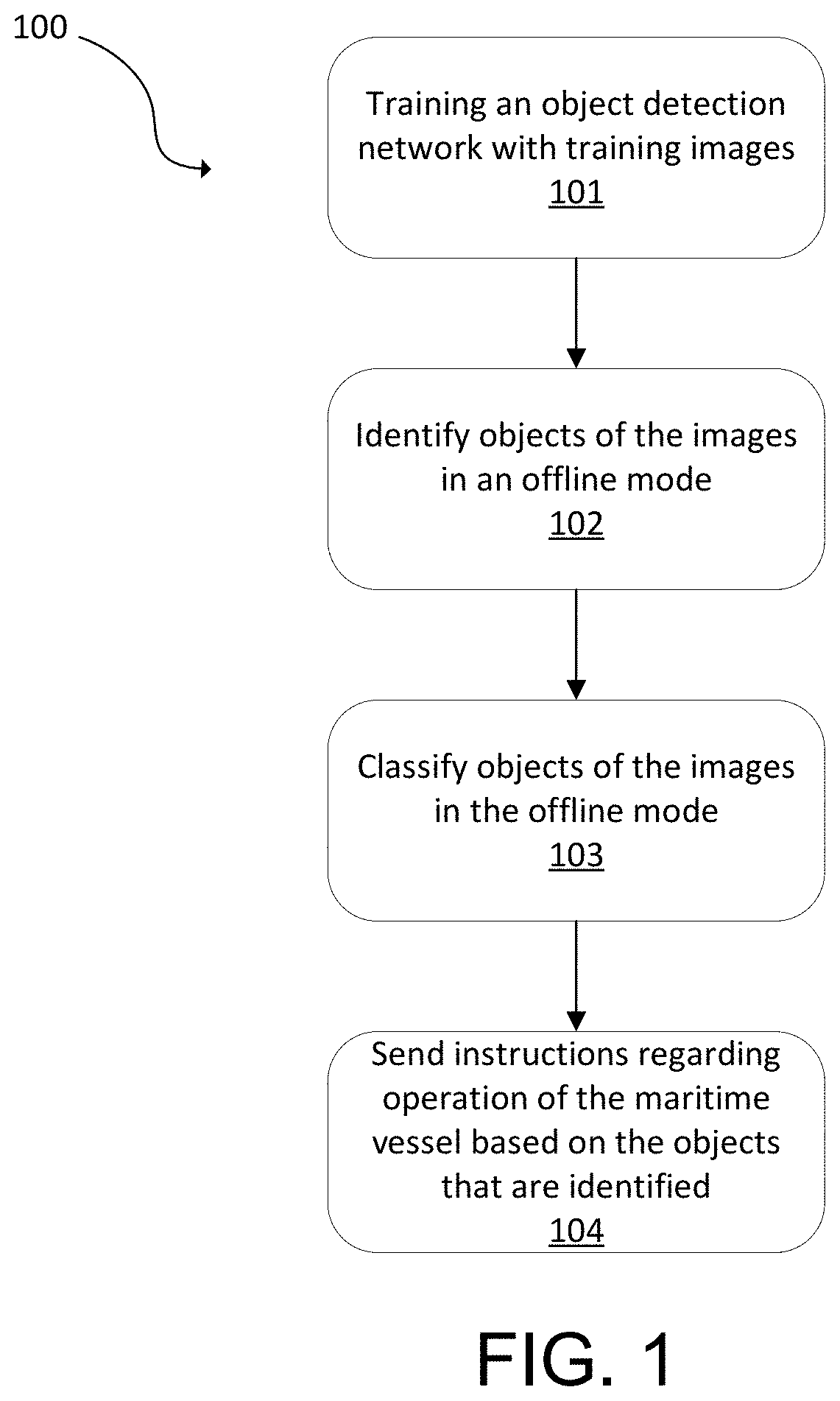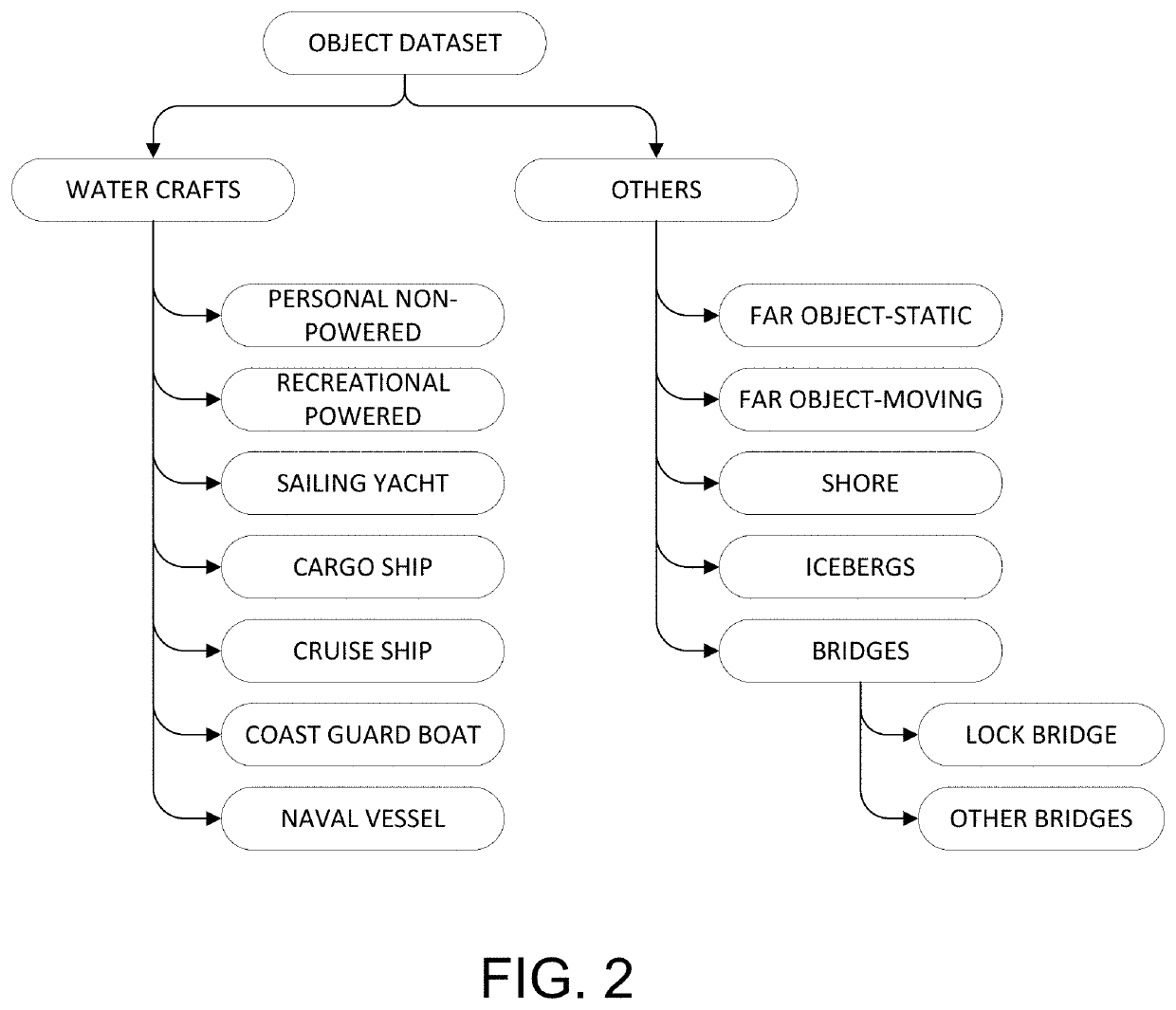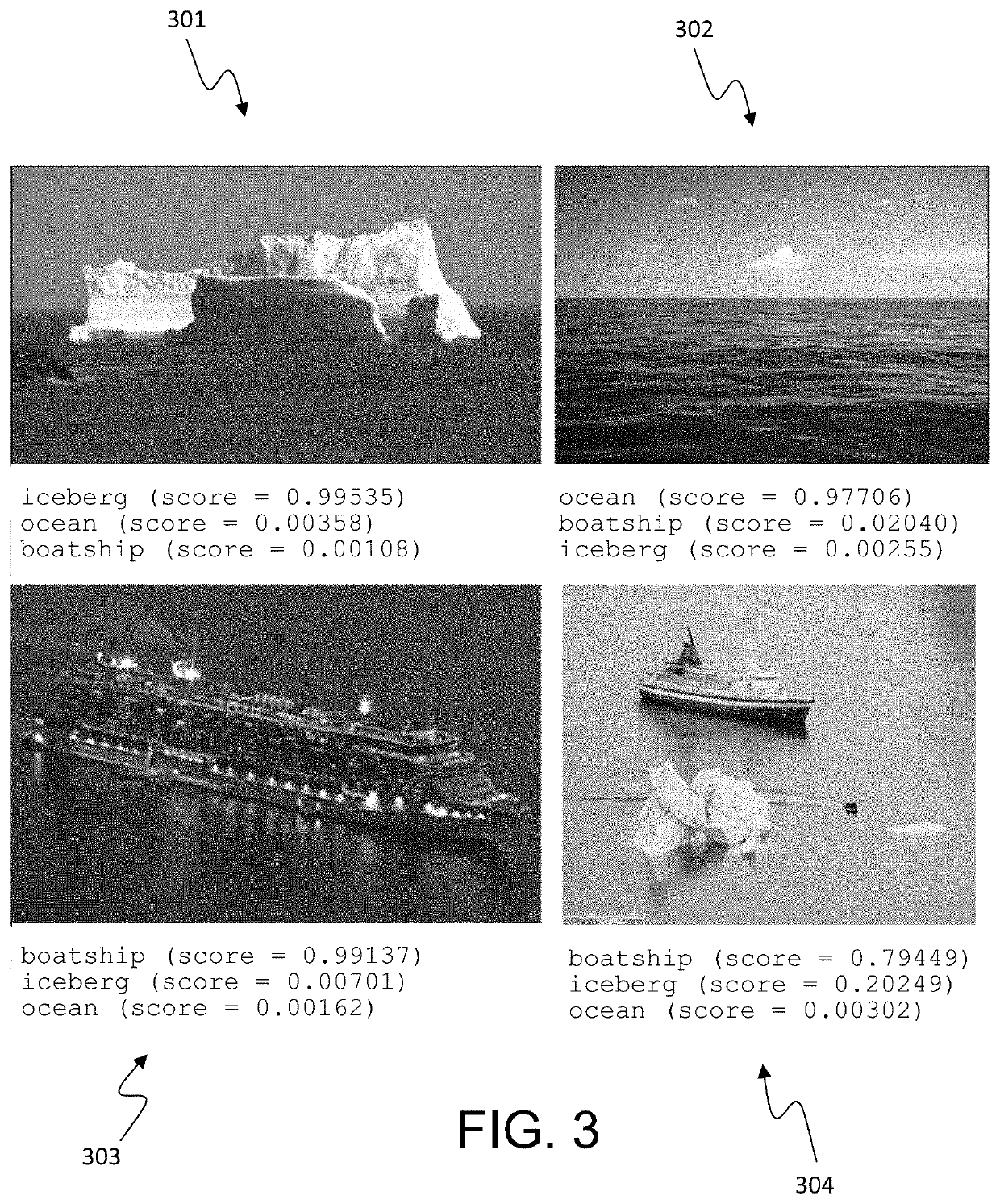Training a deep learning system for maritime applications
a deep learning and maritime application technology, applied in the field of autonomous vehicles, can solve the problems of too small to hire a crew, too small to hire a junior captain, and increase the likelihood of human error due to fatigue, distraction, or attention laps
- Summary
- Abstract
- Description
- Claims
- Application Information
AI Technical Summary
Benefits of technology
Problems solved by technology
Method used
Image
Examples
Embodiment Construction
[0064]Although claimed subject matter will be described in terms of certain embodiments, other embodiments, including embodiments that do not provide all of the benefits and features set forth herein, are also within the scope of this disclosure. Various structural, logical, process step, and electronic changes may be made without departing from the scope of the disclosure.
[0065]Embodiments disclosed herein include systems, methods, and apparatuses for training deep learning and intelligent sensing system integration for autonomous ships.
[0066]An object detection network (ODN), which can include a convolutional neural network (CNN), can be trained to identify and classify objects in a real-time offline environment. The object detection network can be trained to operate a maritime vessel. Maritime objects can be identified and classified using the object detection network. The system can identify objects such as seashore, boats, ships, navigation safety hazards, icebergs, plain sea, ...
PUM
 Login to View More
Login to View More Abstract
Description
Claims
Application Information
 Login to View More
Login to View More - R&D
- Intellectual Property
- Life Sciences
- Materials
- Tech Scout
- Unparalleled Data Quality
- Higher Quality Content
- 60% Fewer Hallucinations
Browse by: Latest US Patents, China's latest patents, Technical Efficacy Thesaurus, Application Domain, Technology Topic, Popular Technical Reports.
© 2025 PatSnap. All rights reserved.Legal|Privacy policy|Modern Slavery Act Transparency Statement|Sitemap|About US| Contact US: help@patsnap.com



